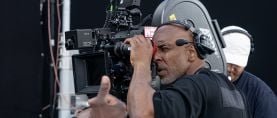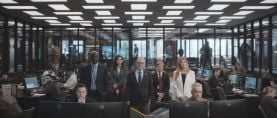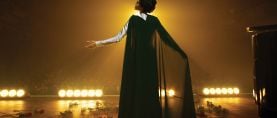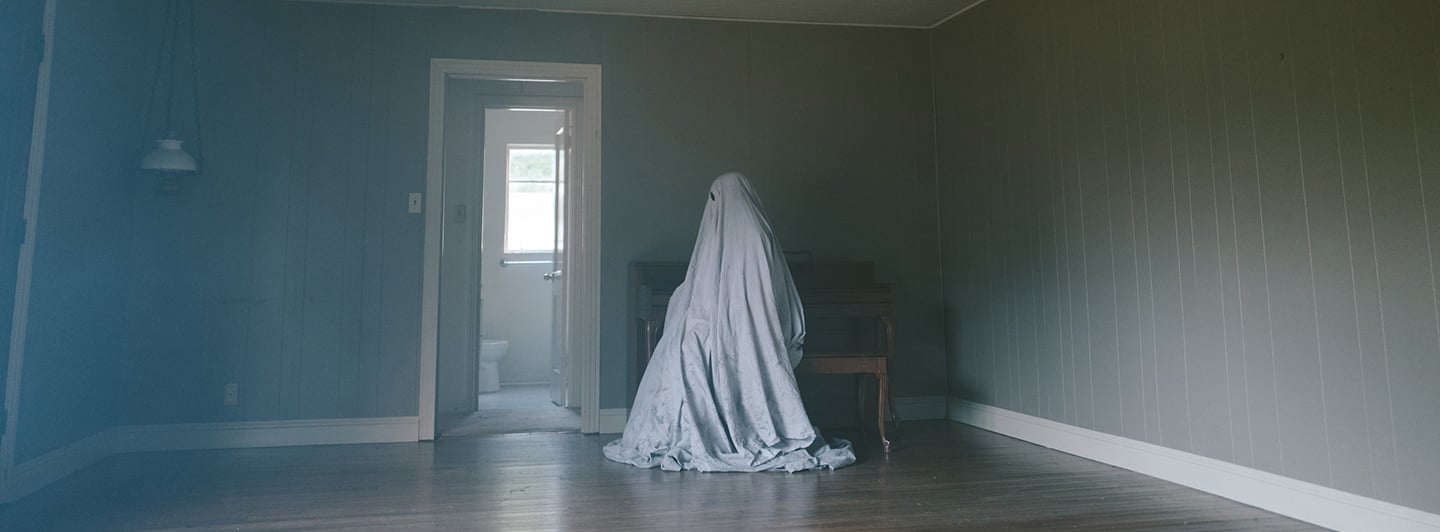
A Ghost Story: Haunted House
Cinematographer Andrew Droz Palermo partners with writer-director David Lowery for an intimate portrait of a spirit stuck at home and untethered in time.
Photos by Bret Curry, courtesy of A24
A man and woman move into a house. In time, the woman comes to feel they’ve outgrown the space, but her husband feels rooted to the home and its history. After a car accident takes his life, the man’s spirit returns to the house, where his perception of time becomes increasingly abstracted: He watches his wife drive away for the last time, sees new residents occupy and abandon the abode, stalks the halls of the futuristic skyscraper that eventually overtakes the land, and plunges backward in time to witness a family of settlers first drive a stake into what he knows will become personally storied ground.
With a small cast — centered around the man, C (Casey Affleck), and the woman, M (Rooney Mara) — A Ghost Story was written, directed and edited by David Lowery (interview here). Prior to making audiences believe in A Ghost Story’s quiet specter, the director had crafted a tale of mythical Americana with Ain’t Them Bodies Saints (shot by Bradford Young, ASC; AC Sept. 2013) and convinced moviegoers that winged, green-furred beasts hide in the woods of the Pacific Northwest with Pete’s Dragon (photographed by Bojan Bazelli, ASC; AC Sept. ’16).
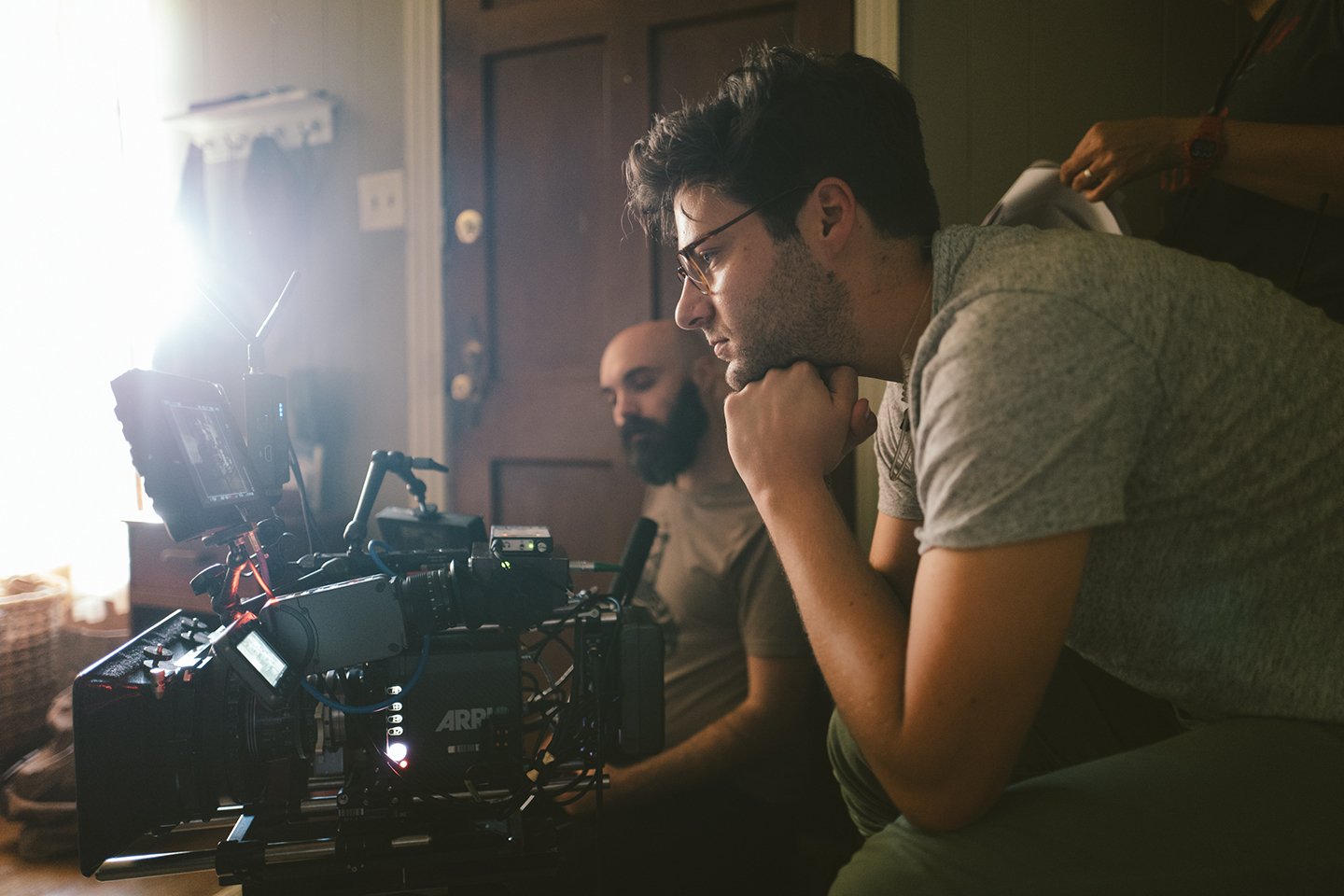
Joining Lowery for A Ghost Story was cinematographer Andrew Droz Palermo, whose credits behind the camera include the features You’re Next, A Teacher and 6 Years, and the documentary Rich Hill (AC April ’14), which he also co-directed. Faced with a 19-day production schedule — which was followed by about 10 days of additional photography — the filmmakers embraced a predominantly single-camera approach, shooting with an Arri Alexa Mini as the A camera, which they paired with Panavision Super Speed and Ultra Speed primes, and 19-90mm and 24-275mm Primo zooms (both T2.8). They recorded 2.8K ProRes files to CFast 2.0 cards, working in the camera’s 4:3 mode for a final 1.33:1 aspect ratio presented with rounded corners that were added in post.
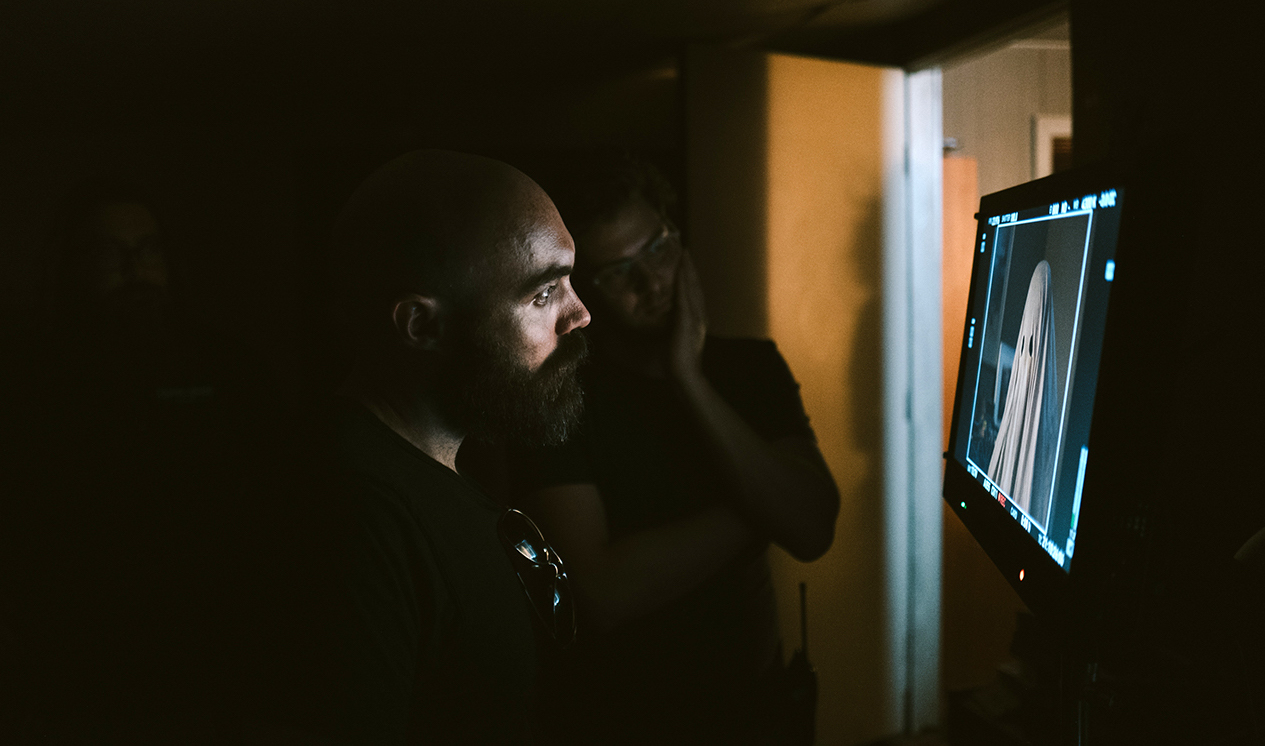
Although Palermo and Lowery hadn’t worked together previously, their orbits had intersected on multiple occasions, such as when they each had a project at the Sundance Labs — Lowery with Ain’t Them Bodies Saints, and Palermo with his feature directorial debut, One and Two. But it was mutual friend and A Ghost Story producer Toby Halbrooks who reached out to Palermo to gauge his interest in the project. “We had breakfast and he mentioned the idea,” Palermo tells AC, seated outside at a coffee shop in the Silver Lake neighborhood of Los Angeles, with a Hasselblad medium-format camera at his side. “He said, ‘There’s this movie that we want to do. It’s just a guy in a sheet — that’s the ghost. It’s not supposed to look supernatural; it’s supposed to look like a guy in a sheet.’”
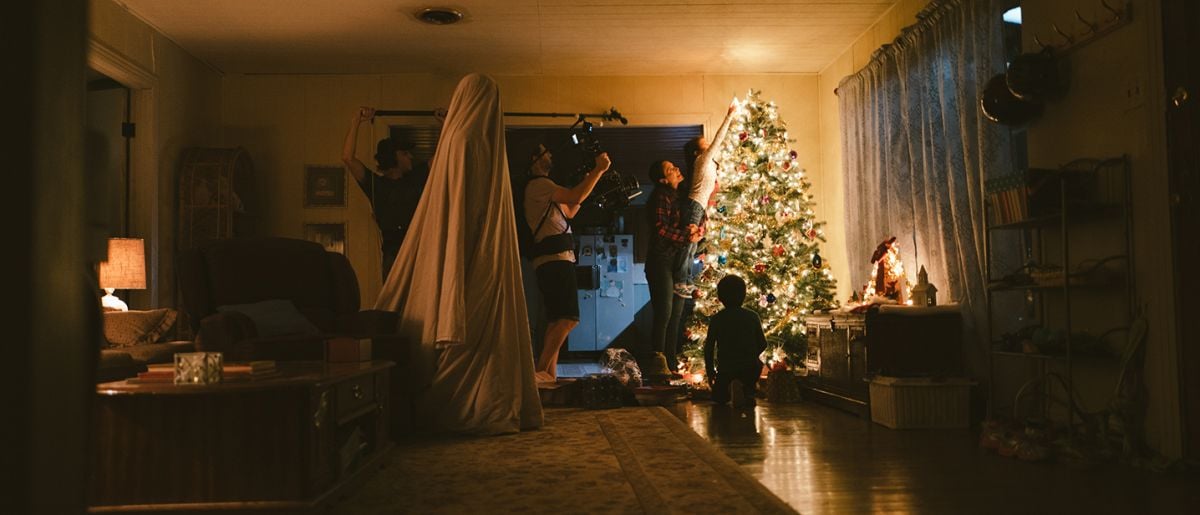
American Cinematographer: Were you nervous about it being ‘just a guy in a sheet’? Did you wonder if it would actually work?
Andrew Droz Palermo: I think David was more worried about it than I was, about whether or not it was working. I thought it was so visually strong. But I knew it was going to be a challenge. It was incredibly hard to shoot.
What made it so difficult?
Palermo: [Costume designer] Annell Brodeur needed to be a puppeteer, essentially. She would be just below camera holding different parts of the costume to give it the right expression; if it started riding lower, it would look really sad, and if it got a little too frumpy, it would look comedic. She had done a lot of work before I was involved. She built up this sort of petticoat, with multiple layers, and there was a soft-formed helmet that gave it structure and a strong bridge of the nose.
Still, the ghost becomes so abstracted when you shoot from the shoulder up — it’s just a curve and two dots. You don’t really get the scope of the costume unless you see him head to toe. So David and I were pushed to shoot a lot wider than we were used to — which was something I’d wanted to incorporate more into my work anyway. A lot of it was, ‘How can we make this feel powerful and imposing, with strong tableaus, like every frame could be taken as a still?’ The impact of the images was always the challenge. If I moved the camera a little this way or a little that way, it would become a stronger image or say so much more about the ghost’s confinement, or his emotional state, or the eeriness of what was going on.
The hospital is a great instance of that. We staged the really long take when he first comes ‘alive’ as a ghost on a scout day. Every element was considered within that frame, and that sort of attention to detail was afforded to us by the schedule, even though it was very short. We had a half a day to shoot that one shot, which is incredible. That gave us such an unhurried feel, and it seeped into the core of the movie. David even stated in an early meeting with everyone, ‘Our energy is going to feed the movie. If we’re rushed and we’re hurried and we’re stressed, the movie won’t have that patience.’ I completely agree with that.

Was it the realization that you would have to shoot wider that led you to embrace longer takes?
Palermo: The script told us that. Time was always a thread for this movie. David pitched it once as Apichatpong Weerasethakul making Ghost — like a Thai art film of the Patrick Swayze Ghost. He and I both love Apichatpong’s movies, Asian cinema, Thai New Wave, Taiwanese films — those were all kicking around in our heads. We wanted to make a film like those films, and we knew that this movie was the one to do it with.
In the same way, that’s how 4:3 came about. David was like, ‘I’m never going to be able to shoot 4:3 again.’
That aspect ratio is a very different animal to get your head around.
Palermo: Completely. I underestimated it, too. You would think that it would be easier than it is, but it’s just totally different than the way I think. When I’m watching older movies now, I’m so envious of the way they used it. I see frames from classic movies, and they put 15 people in a frame and it feels perfect. I’m just blown away by the way they used 4:3.
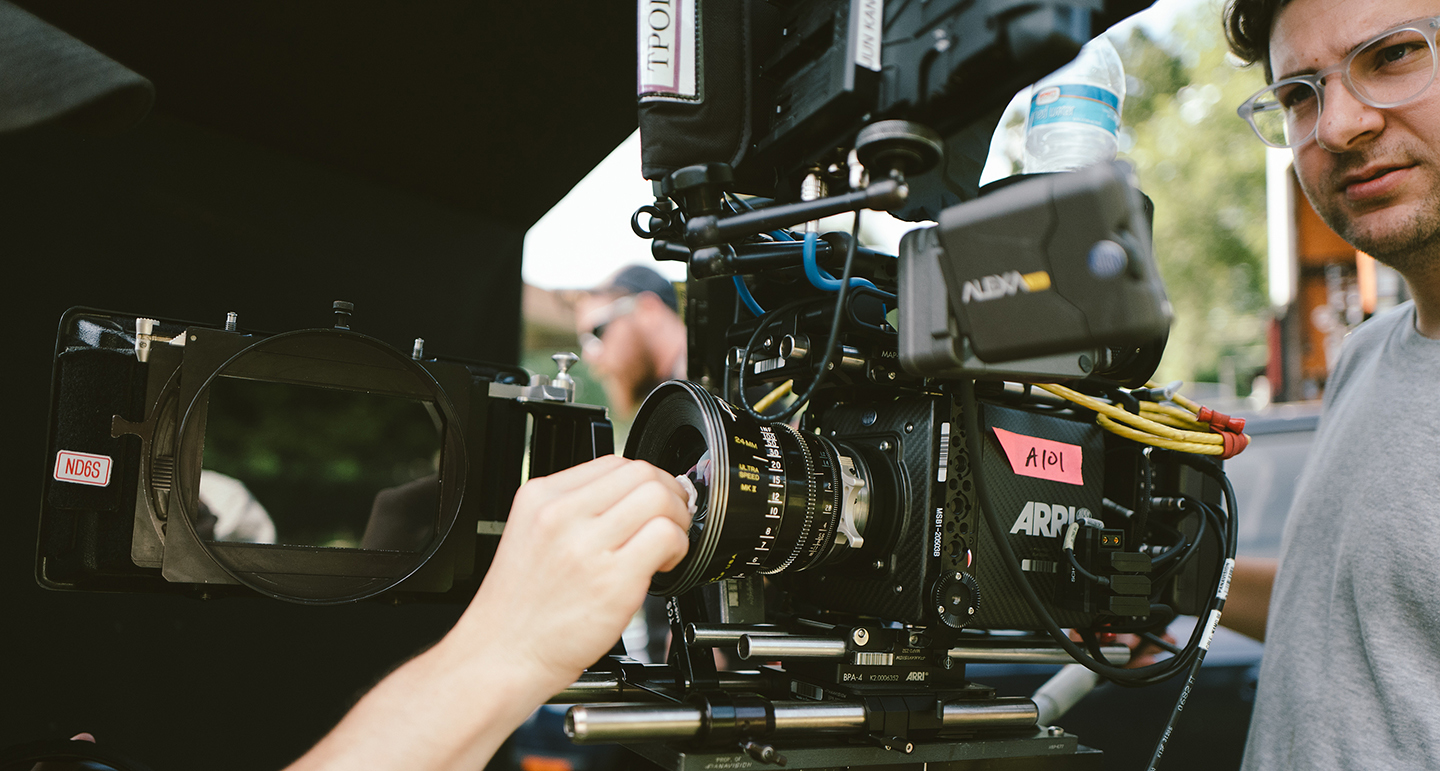
In A Ghost Story, the frame feels like a window — like you’re watching through some kind of portal.
Palermo: The rounded corners add an aspect of feeling like you’re looking through something. It was never our intention to make it claustrophobic. I didn’t want it to feel too tight — and with the costume, anyway, you couldn’t go too tight. We shot natively in 4:3 for the main camera, but occasionally we’d have a B camera on set, and those cameras were not shooting natively 4:3. When we saw the footage, we’d be like, ‘Oh, 16:9’s looking pretty good.’ We’d start to be worried that 4:3 was a crazy choice, but I’m so happy we stuck with it.
What did preproduction look like for you?
Palermo: It was really abbreviated. I went out to Burbank maybe two or three times, and we shot-listed in the lunchroom at Disney while some of the color was going on for Pete’s Dragon. We didn’t really look at the shot list on set, but it was super-helpful to get on the same page. David’s a very visual person and has very specific ideas for shots; it’s good to put those down and remember that he’s thinking this way.
The house had already been chosen, so then I went to the location [in Irving, Texas, near Dallas] and took a bunch of photos, multiple times a day, to see the different ways the light would play. And then it was shooting costume tests.
Were the production designers, Jade Healy and Tom Walker, already on the project when you came on board?
Palermo: Yeah. The house that they used was completely abandoned, and you can’t tell. They did incredible work on it. Early on, Jade sent me a look book with stills of things that she was referencing — other movies, other books — and when we were choosing the wallpaper for the bedroom, she made a small little ghost on a stick and put it in front of swatches of wallpaper. It was the cutest thing, but it really illustrated what it would look like. Jade had previously committed to go do Yorgos Lanthimos’ new movie [The Killing of a Sacred Deer], so she worked side by side with Tom, who was local, and when we did additional photography in October, Tom did all that.
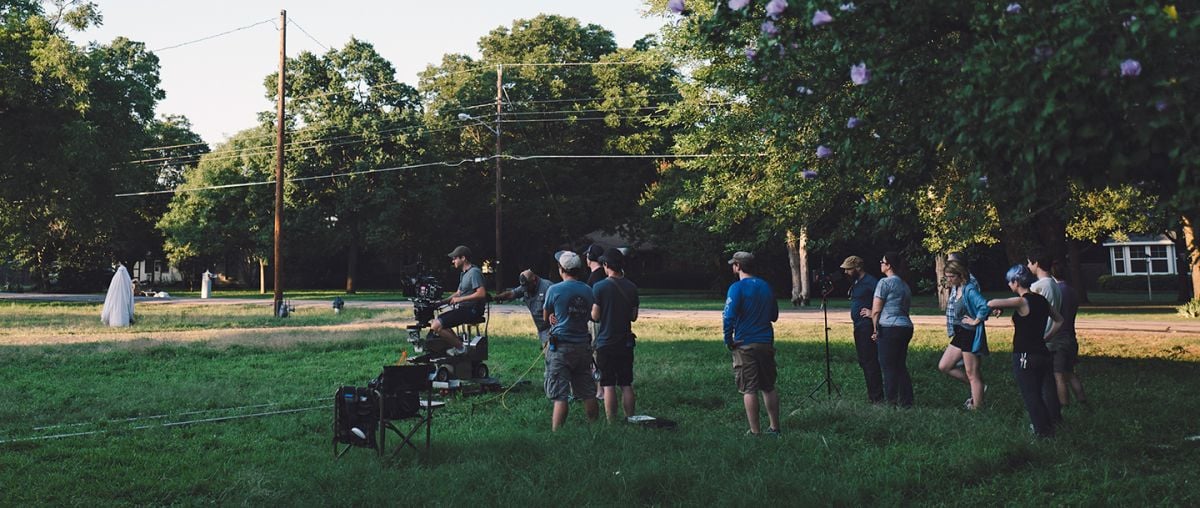
Did you use some atmosphere inside the house?
Palermo: We did. Hazers were running any time the ghost was present inside the house. That was inspired by some of the photography we were looking at. We really like Gregory Crewdson’s stuff, which always has that eerie quality. I looked a lot at the way he lights day interiors, because he manages to keep his corners really deep. I wanted the walls to stay deep, I wanted to feel the shafts of light, and atmosphere was really important for helping achieve that falloff.
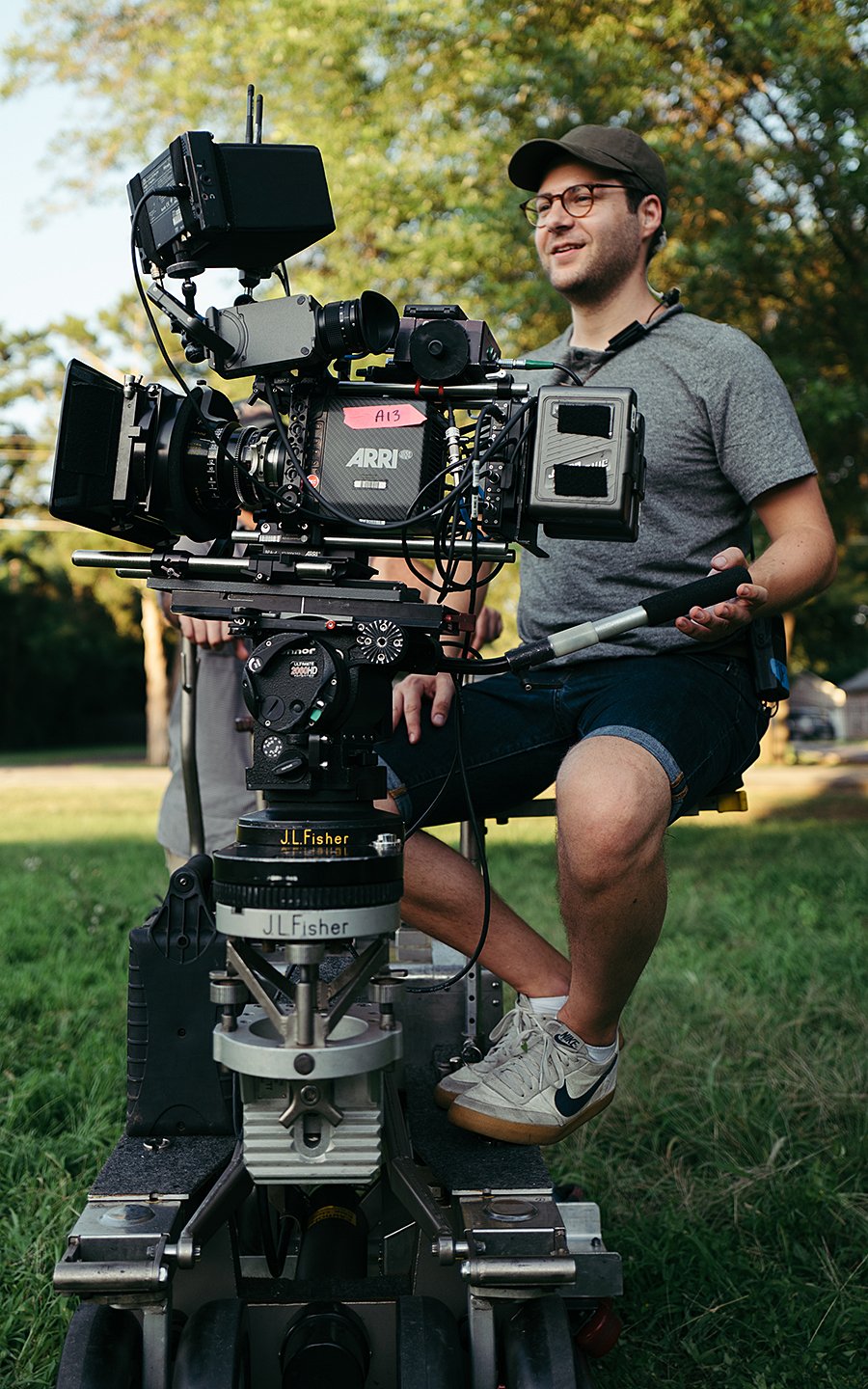
What sort of lighting package did you have?
Palermo: A very small package. More often than not it was flagging stuff — the Texas sun was just too strong for what we had. We couldn’t afford the kind of HMIs that we would need to overpower it, so it became a game of removal: Let’s block out windows and keep the source coming in one direction. Bret Curry, my gaffer and second-unit cinematographer, and I noticed that there was a lot of green coming into the house, which was mainly from the grass and all the trees; Rooney is so fair, when she would get up to a window she would take on this really lime-green pallor. So we would lay out big sheets of unbleached muslin in the grass, and that would bring it back to neutral. Save for that, daylight interiors were pretty natural. For fill, I had two LED bi-color [LiteGear] LiteMats that I would either bounce off the wall or bring up super-dim really close to the ghost. Those were our real workhorses for night scenes, too.
As the film changes, the light changes. For example, if you look at the under-lights in the kitchen, I gelled those for each different family that inhabits the house. Casey and Rooney’s were nice and warm; with the Latino family, I went cool blue, very fluorescent; and then for the squatters I put a very thin party gel and made it a little pink.
In a couple of instances, the ghost manipulates the house’s lights.
Palermo: Yeah, Bret would be off-camera with a few dimmers — and many of them were not on dimmers, it would just be a simple switch. Almost every time we’d shoot the ghost, if there’s not someone else visible, we would be shooting at 33 fps, and so a light would pulse in a way that didn’t just feel like somebody flipping the switch on and off. That was a frame rate that David had started using on Pete’s. It didn’t feel like slow motion, but the ghost didn’t just feel like he was walking.
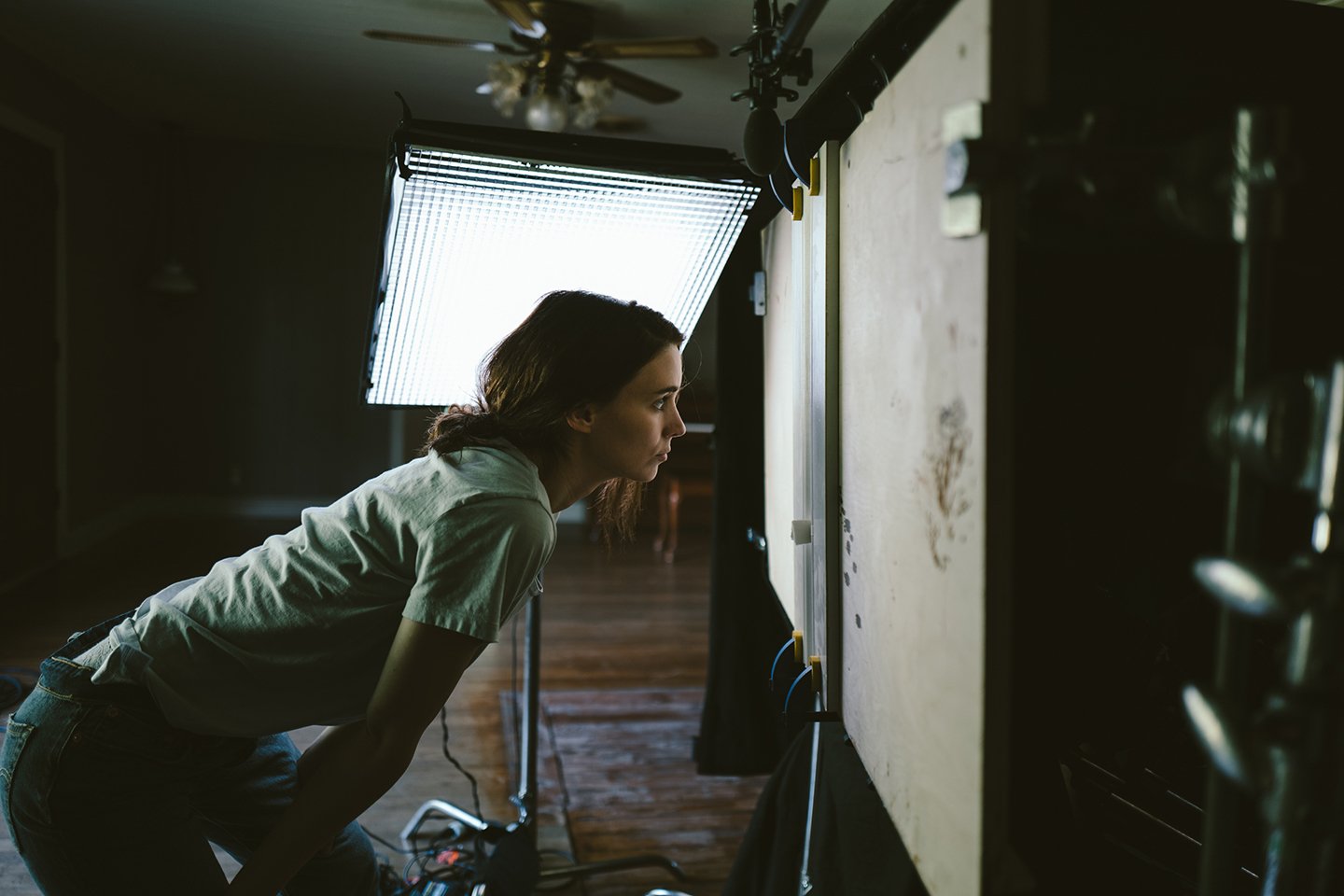
When the new family moves into the home, a suddenly very mobile camera follows them through the space.
Palermo: That’s another thread that I really like about the movie: In the same way the light changes, the camera language changes. The Latino family is presented with a [Freefly Systems] Movi M15 on a Ready Rig gimbal support; the Movi technician was Shaun ‘Gish’ Falcone. It’s very free-flowing, very wide. After the destruction of the house, when the ghost is roving around the skyscrapers, we used Steadicam. And then the pioneers were all shot on a long lens. We were finally outside, in this expanse, so that just came naturally; now that we were in a period piece, it just didn’t feel right to bring a wide lens close to this pioneer.
Was there a stop you tried to maintain?
Palermo: No, I don’t normally shoot for stop. The 50mm [Ultra Speed] would go to a T1, and I was in love with that idea. The first time we used it was the close-up of Rooney with her headphones on; that lens was just stunning. So that lens worked in close-ups all the way open. But otherwise I just set the aperture as felt appropriate. Generally I was shooting as wide open as I could.
“As I’ve become more comfortable with myself or more comfortable with the work I’m putting out there, I just want to make things for the sake of making them; I want to make them for the process.” — Andrew Droz Palermo

There’s still a lot of depth in the image.
Palermo: That’s from the lenses being so wide and the subjects always being so far from the camera. But I would always snug up against a doorframe so there would be a little something on the side that’s soft, and then everything else would be sharp past the midground and into infinity.
There’s a shot in which the camera pushes in as Rooney is seen walking out of the bathroom, crossing to the front door, and leaving the house multiple times in a row, each time wearing different clothes. Did you have a motion-control rig?
Palermo: This speaks to the benefit of shooting films where you have a support system. The producers had a friend, Stewart Mayer at CamBlock, who had developed this motion-control rig. The camera had to be totally stripped down and very lightweight, and he had a very small set of sticks that went on a track system. He could set pan, focus and the push, and he could set key frames. We had Rooney, her stand-in and another woman; they went in a train, one after the other, and we had Rooney change positions in each take, and then it was all comped together. We used the motion-control system for just a couple hours and then it was gone. That shot swiftly illustrates that time is beginning to slip by.
Was visual-effects supervisor Richard Krause with you during the shoot?
Palermo: Not every day. I’ve had some experience shooting visual effects, and David of course has as well, so we both had an eye on it. I don’t think we ever had markers except for greenscreen stuff. The scene in which the ghost climbs to the top of the skyscraper, that’s all work that [visual-effects facility] Weta did, and it’s absolutely stunning work on their part; we shot the ghost on greenscreen, climbing up apple boxes, with some markers in the studio.

Who did you work with for the color grading?
Palermo: Joe Malina in Austin. He and I have done a few things together in the past, but it was the first time David had worked with him. It was a real race to get the movie done in the end [once it had been selected to screen at Sundance]. We did five days of color correction in early December, before the cut was locked. Because there are so few shots, we got pretty far — but there was a lot of work to be done on each shot. We didn’t have any kind of pre-grade, so the footage came in exactly as shot — different months, at different times of day, the same scene shot over different conditions.
When David locked picture, there were an additional two or three days, and then a few more days after Sundance. But it was not that long. I really love color timing, and it’s always sad for me to do it quickly.
You could still be in there working on the movie?
Palermo: I really could, trying to do the most with as little as possible. There’s a point of diminished returns, where we’ve gone too far and it becomes way too manipulated, but I really feel a lot of the emotion comes out in color.
Were you watching any dailies during production?
Palermo: Yeah, and I was also capturing stills on my day off. That would give me a whole day of sitting with the drive, watching the footage, seeing what was working, what wasn’t. The time off in between principal and pickups was really educational, too — seeing the cut, seeing where I should push harder. Some of the widest shots in the movie were shot after principal.
You’ve directed, and David’s notched credits as a cinematographer. Do you feel those experiences elevated the collaboration, or helped you find a shared language?
Palermo: His shooting I can definitely speak to. He has very specific shots in mind sometimes, but even then there’s so much collaboration. He’s never over your shoulder — ‘I wanted it like this.’ It’s always, ‘How can I improve on it? What can I do to make this really sing?’ It’s fantastic because he knows exactly what he wants and he knows when it’s right; if I made a recommendation for a shot, he would know immediately whether that shot was valuable to him. He and I both are also very avid film watchers, and as a result we had a shorthand.
I’m astounded by his ability to edit. It’s one of the things that I admire the most about him. When I see the way he used stuff out of context and what you can get away with in an edit, it’s incredible. The ghost looked over his left shoulder; you can’t really tell what the background is, so David would put it in this scene — it didn’t matter if it was a totally different room, different time of day. I’m always surprised by the way you can divorce footage of its original intent.
Probably his biggest asset is his general placidness. He will say that he feels like the world is crashing down on him when he’s making a movie, but he gives off a calm that really trickles down. And it also trickles down from his producers. That really sets a mood: nothing’s a disaster; there are no real fires here; we’re all making a movie, and what a blessing it is to be doing that.
And as a result, as you mentioned earlier, the movie has a real calmness to it — even as the ghost becomes increasingly untethered and time slips by at an accelerating rate.
Palermo: That was the thing that I was so touched by in the movie. The script so perfectly nailed that, and it kind of does away with the feeling that we need to have a legacy at all. It’s so at peace with our position in this world. When I first started making things I was really concerned with how they’re perceived, how I’m perceived through them, what they look like in the long run. As I’ve become more comfortable with myself or more comfortable with the work I’m putting out there, I just want to make things for the sake of making them; I want to make them for the process.
This film’s process was one of the best I’ve ever had. I’ve made some great friends and had a great time making them. The fact that there is this movie at the end of the process that I like is another aspect of it, and I do like that it’s going to live on, and that it’s this document of a time in our lives when we all got together in Dallas, in the sweltering heat, and put an Oscar-winning actor in a sheet. Not to get all philosophical about it, but that’s ultimately the beauty of this film to me.
TECHNICAL SPECS
1.33:1
Digital Capture
Arri Alexa Mini, Alexa Classic EV, RED Weapon 6K
Panavision Super Speed, Panavision Ultra Speed, Panavision Primo Zoom
For access to 100 years of American Cinematographer reporting, subscribers can visit the AC Archive. Not a subscriber? Do it today.
